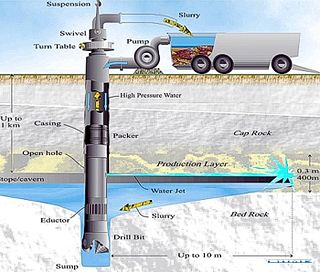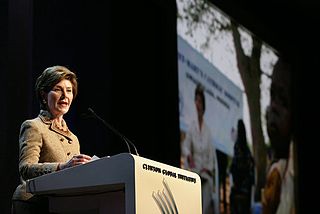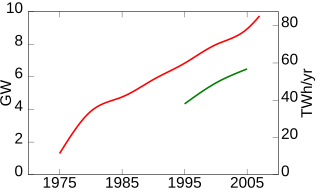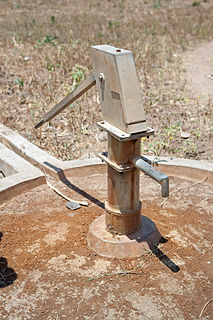
An oil platform, oil rig, offshore platform, or oil and/or gas production platform is a large structure with facilities to extract, and process petroleum and natural gas that lie in rock formations beneath the seabed. Many oil platforms will also contain facilities to accommodate their workforce, although it is also common for there to be a separate accommodation platform bridge linked to the production platform. Most commonly, oil platforms engage in activities on the continental shelf, though they can also be used in lakes, inshore waters, and inland seas. Depending on the circumstances, the platform may be fixed to the ocean floor, consist of an artificial island, or float. In some arrangements the main facility may have storage facilities for the processed oil. Remote subsea wells may also be connected to a platform by flow lines and by umbilical connections. These sub-sea solutions may consist of one or more subsea wells or of one or more manifold centres for multiple wells.

A borehole is a narrow shaft bored in the ground, either vertically or horizontally. A borehole may be constructed for many different purposes, including the extraction of water, other liquids or gases, as part of a geotechnical investigation, environmental site assessment, mineral exploration, temperature measurement, as a pilot hole for installing piers or underground utilities, for geothermal installations, or for underground storage of unwanted substances, e.g. in carbon capture and storage.

The Kola Superdeep BoreholeSG-3 is the result of a scientific drilling project of the Soviet Union in the Pechengsky District, near the Russian border with Norway, on the Kola Peninsula. The project attempted to drill as deeply as possible into the Earth's crust.

Borehole Mining (BHM) is a remote operated method of extraction (mining) of mineral resources through boreholes based on in-situ conversion of ores into a mobile form (slurry) by means of high pressure water jetting (hydraulicking). This process is carried-out from a land surface, open pit floor, underground mine or floating vessel through pre-drilled boreholes.

Hand pumps are manually operated pumps; they use human power and mechanical advantage to move fluids or air from one place to another. They are widely used in every country in the world for a variety of industrial, marine, irrigation and leisure activities. There are many different types of hand pump available, mainly operating on a piston, diaphragm or rotary vane principle with a check valve on the entry and exit ports to the chamber operating in opposing directions. Most hand pumps are either piston pumps or plunger pumps, and are positive displacement.

The Roundabout PlayPump is a system that uses the energy created by children playing to operate a water pump. It is manufactured by the South African company Roundabout Outdoor. It operates in a similar way to a windmill-driven water pump.

A ground source heat pump is a heating/cooling system for buildings that uses a type of heat pump to transfer heat to or from the ground, taking advantage of the relative constancy of temperatures of the earth through the seasons. Ground source heat pumps (GSHPs) – or geothermal heat pumps (GHP) as they are commonly termed in North America – are among the most energy-efficient technologies for providing HVAC and water heating, using far less energy than can be achieved by burning a fuel in a boiler/furnace or by use of resistive electric heaters.

The developing nations of Africa are popular locations for the application of renewable energy technology. Currently, many nations already have small-scale solar, wind, and geothermal devices in operation providing energy to urban and rural populations. These types of energy production are especially useful in remote locations because of the excessive cost of transporting electricity from large-scale power plants. The applications of renewable energy technology has the potential to alleviate many of the problems that face Africans every day, especially if done in a sustainable manner that prioritizes human rights.

Access to water supply and sanitation in Ethiopia is amongst the lowest in Sub-Saharan Africa and the entire world. While access has increased substantially with funding from foreign aid, much still remains to be done. Some factors inhibiting the achievement of these goals are the limited capacity of water bureaus in the country's nine regions, two city administrations and water desks in the 770 districts of Ethiopia (woredas); insufficient cost recovery for proper operation and maintenance; and different policies and procedures used by various donors, notwithstanding the Paris Declaration on Aid Effectiveness.

Baptist well drilling is a very simple, manual method to drill water wells. The Baptist drilling rig can be built in any ordinary arc welding workshop and materials for a basic version costs about 150 US dollars. In suitable conditions, boreholes over 100 m deep have been drilled with this method.

A well is an excavation or structure created in the ground by digging, driving, or drilling to access liquid resources, usually water. The oldest and most common kind of well is a water well, to access groundwater in underground aquifers. The well water is drawn up by a pump, or using containers, such as buckets, that are raised mechanically or by hand. Water can also be injected back into the aquifer through the well. Wells were first constructed at least eight thousand years ago and historically vary in construction from a simple scoop in the sediment of a dry watercourse to the qanats of Iran, and the stepwells and sakiehs of India. Placing a lining in the well shaft helps create stability, and linings of wood or wickerwork date back at least as far as the Iron Age.

The drinking water supply and sanitation sector in Ghana faces a number of challenges, including very limited access to sanitation, intermittent supply, high water losses, low water pressure, and pollution. Since 1994, the sector has been gradually reformed through the creation of an autonomous regulatory agency, introduction of private sector participation, decentralization of the rural supply to 138 districts and increased community participation in the management of rural water systems.
The A Glimmer of Hope Foundation was founded by Texas-based philanthropists Philip Berber and Donna Berber to reduce extreme poverty in rural Ethiopia. In 2010, Philip and Donna were ranked #7 by Barron's in its list of '25 Best Givers' in the world, and dubbed as "capitalist crusaders," by the New York Times Magazine. From 2001 to 2010, the foundation had funded more than 4,000 projects throughout the country. A Glimmer of Hope also runs a local program within Austin for at-risk youth and senior citizens. Currently, their Board of Directors consist of the two co-founders, Philip and Donna Berber, Ryan Berber, Shane Berber, Santiago Montoya, and Jake Berber.

Wine To Water is a non-profit organization committed to supporting life and dignity for all through the power of clean water. The organization was founded by Doc Hendley in 2007.

United Downs Deep Geothermal Power is a planned geothermal energy power plant in Redruth in Cornwall, England, UK. The UK Government has invested in the project through the Getting Building Fund. It aims to begin live operation by 2022.

The India Mark II is a human-powered pump designed to lift water from a depth of fifty metres or less. The Mark II is world's most widely used water handpump. The pump was designed in the 1970s to serve village water needs in developing countries and rural areas. The pump is installed on top of a drilled well or borehole and lifts water from the bottom of the well through repeatedly moving the pump handle up and down. Several manufacturers, primarily in India, manufacture the pump which now falls under public domain. By the mid 1990s, five million of the pumps had been manufactured and installed. India Mark ll Pumps' bored hole may be fitted with solar thermal siphon pump to run on solar energy. The resulting assembly may be called the India Mark IV Solar Pump.

Failures of water supply and sanitation systems describe situations where water supply and sanitation systems have been put in place (for example by the government or by non-government organizations but have failed to meet the expected outcomes. Often this is due to poor planning, lack of choice of appropriate technology depending upon the context, insufficient stakeholder involvement at the various stages of the project and lack of maintenance. While Hygiene Behavior Change is important in achieving the health benefits of improved WASH systems, the achievement of sustainability of WASH infrastructure depends on creation of demand for sanitation services.
California's Central Valley subsides when groundwater is pumped faster than underground aquifers can be recharged. The Central Valley has been sinking at differing rates since the 1920s and is estimated to have sunk up to 28 feet. During drought years, the valley is prone to accelerated subsidence. California periodically experiences droughts of varying lengths and severity.

Ice drilling allows scientists studying glaciers and ice sheets to gain access to what is beneath the ice, to take measurements along the interior of the ice, and to retrieve samples. Instruments can be placed in the drilled holes to record temperature, pressure, speed, direction of movement, and for other scientific research, such as neutrino detection.
















